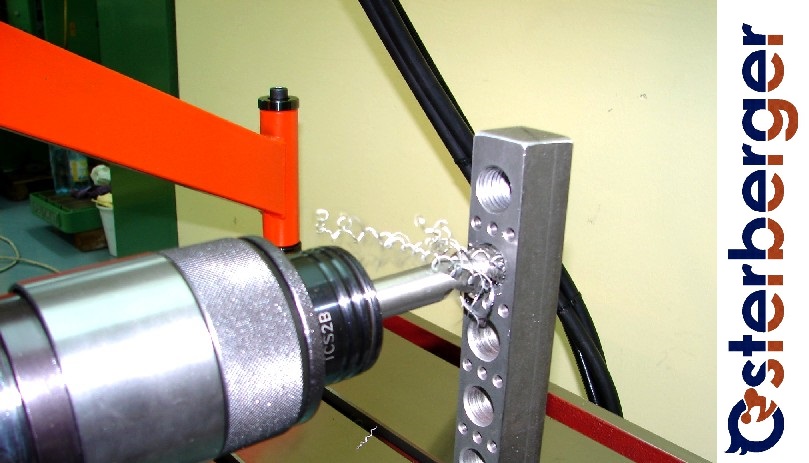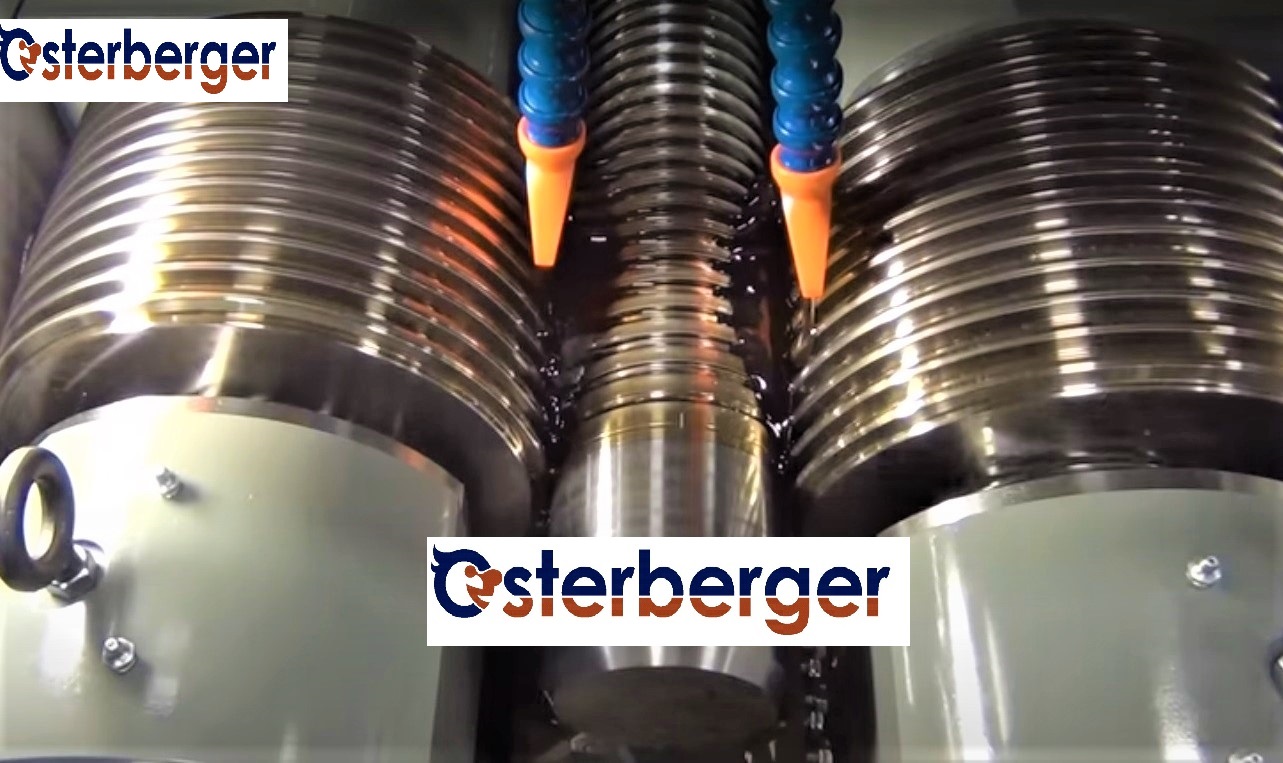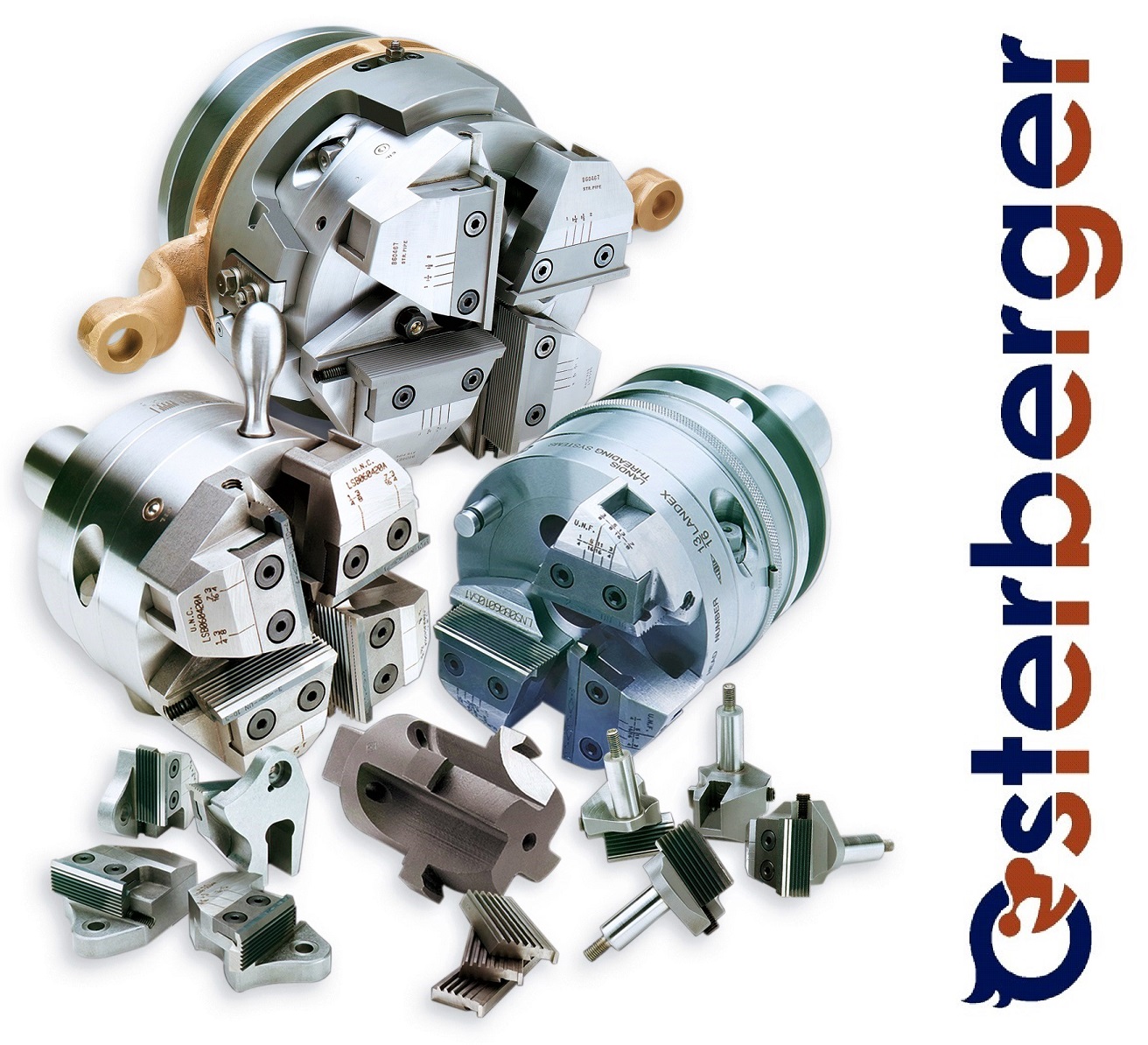 |
GEWINDE – die Herstellung von Gewinden kann unterschiedlich erfolgen, es wird zwischen Innengewinden (ein Gewinde in einer Bohrung oder in einem Rohr) und Außengewinden (ein Gewinde auf einer Welle beziehungsweise einem Bolzen oder einem Rohr) unterschieden.
Außengewinde können spanabhebend (Gewindeherstellung mit einem Gewindedrehmesser, Gewindeherstellung durch eine Schneidkluppe, Gewindeherstellung durch Strehl Backen, Gewindeherstellung durch das Gewindewirbelverfahren) oder spanlos durch eine Kaltumformoperation (Gewinderollen) erfolgen.
Innengewinde können nicht nur durch spanabhebende Fertigungsverfahren hergestellt werden. Das am häufigste angewandte Fertigungsverfahren für die Herstellung von Innengewinden ist das Gewindeschneiden durch einen Gewindebohrer. Innengewinde können aber auch im Drehverfahren mit einem Innengewindedrehmesser hergestellt werden und im Zirkularfräsverfahren mit einem Gewindefräser gefräst werden. Bei der spanlosen Herstellung von Innengewinden erfolgt dieses durch die Verwendung von Kaltumformwerkzeugen, Gewindeformern.
 |
THREAD - the production of threads can be done in different ways; a distinction is made between internal threads (a thread in a bore or in a pipe) and external threads (a thread on a shaft or a bolt or a pipe).
External threads can be machined (thread production with a thread turning knife, thread production using a cutting stock, thread production using chasing jaws, thread production using the thread whirling process) or without cutting using a cold forming operation (thread rolling).
Internal threads cannot only be produced by machining processes. The most common manufacturing process used to produce internal threads is tapping with a tap. Internal threads can, however, also be produced in the turning process with an internal thread lathe and milled in the circular milling process with a thread milling cutter. In the non-cutting production of internal threads, this is done through the use of cold forming tools, thread formers.
 |
FILETAGE - la production de filetages peut se faire de différentes manières, une distinction est faite entre les filetages internes (un filetage dans un alésage ou dans un tuyau) et les filetages externes (un filetage sur un arbre ou un boulon ou un tuyau).
Les filets externes peuvent être usinés (production de filets avec un couteau à fileter, fabrication de filets à l'aide d'un matériel de coupe, fabrication de filets à l'aide de mâchoires broches de taraudage, production de filets à l'aide du processus de tourbillonnement de filets) ou sans découpe à l'aide d'une opération de formage à froid (laminage de filets).
Les filetages internes ne peuvent pas uniquement être produits par des processus d'usinage. Le processus de fabrication le plus couramment utilisé pour produire des filetages internes est le taraudage avec un taraud. Cependant, les filetages internes peuvent également être produits dans le processus de tournage avec un tour à filetage intérieur et fraisés dans le processus de fraisage circulaire avec une fraise à fileter. Dans la production non coupante de filetages internes, cela se fait grâce à l'utilisation d'outils de formage à froid, de filières.
 |
FILETTATURA - la produzione di filettature può essere eseguita in diversi modi, si distingue tra filettature interne (una filettatura in un foro o in un tubo) e filettature esterne (una filettatura su un albero o un bullone o un tubo).
Le filettature esterne possono essere eseguite mediante taglio (produzione di filetti con un coltello rotante, produzione di filetti con un materiale da taglio, produzione di filetti mediante ganasce pettini tangenziali per filettatura interna ed esterna, produzione di filetti mediante processo di turbo filettatura) o senza taglio mediante un'operazione di formatura a freddo (rullatura di filetti).
Le filettature interne non possono essere prodotte solo da processi di lavorazione. Il processo di produzione più comune utilizzato per produrre filettature interne è la maschiatura con un maschio. Le filettature interne possono tuttavia essere prodotte anche nel processo di tornitura con un tornio per filettatura interna e fresate nel processo di fresatura circolare con una fresa a filettare. Nella produzione senza taglio di filettature interne, ciò avviene mediante l'utilizzo di utensili di formatura a freddo, formatori di filetti.
 |

